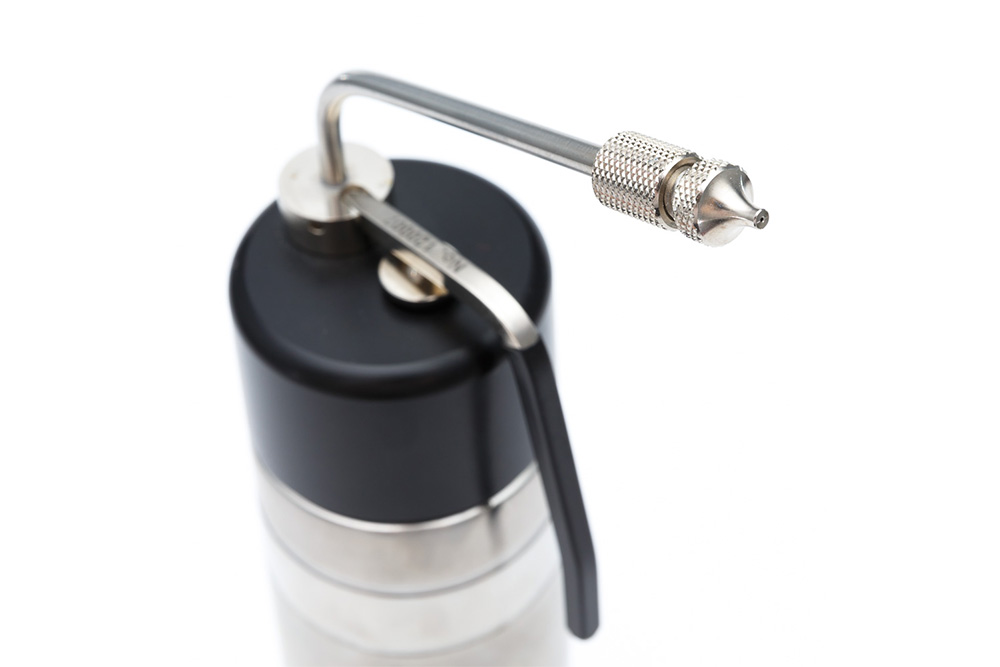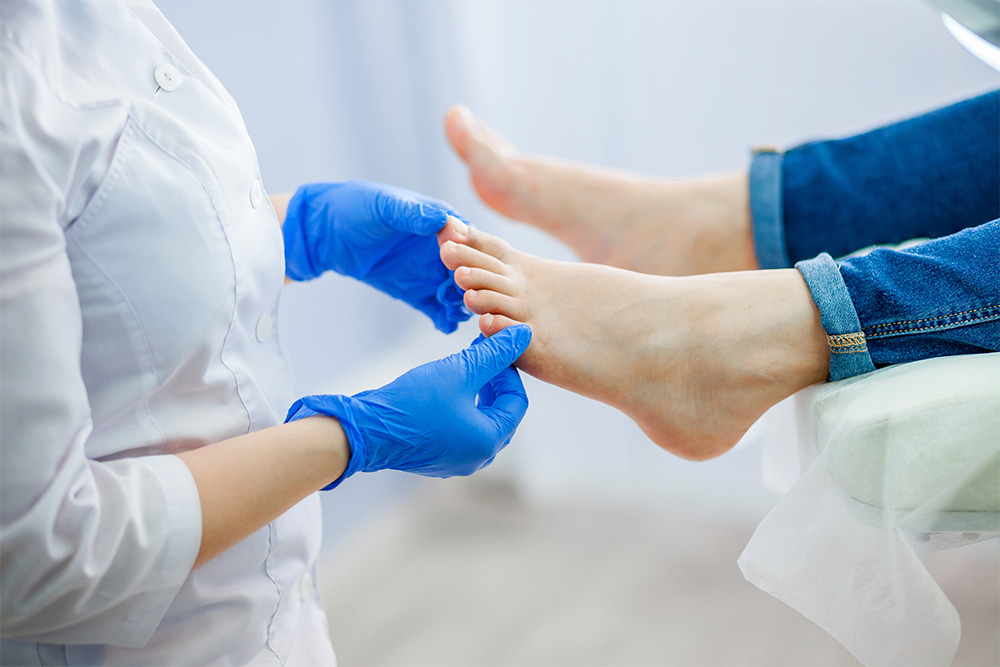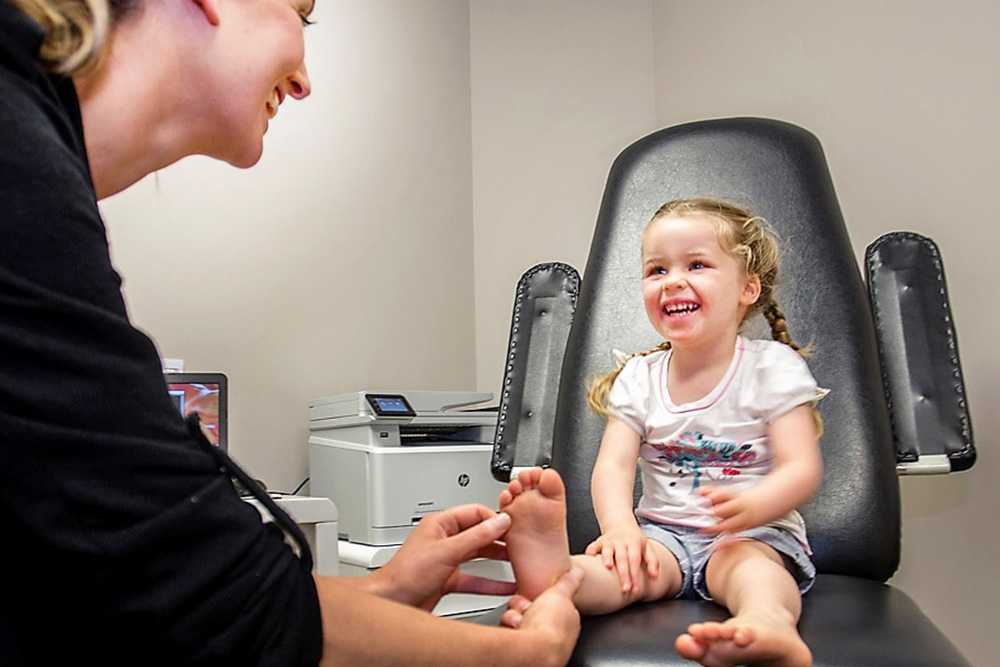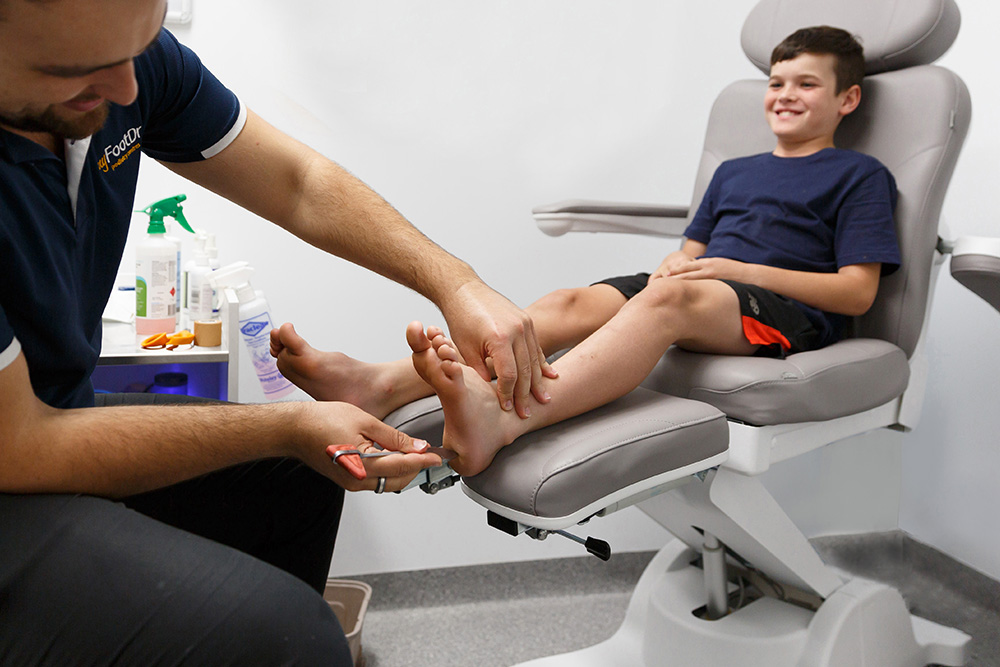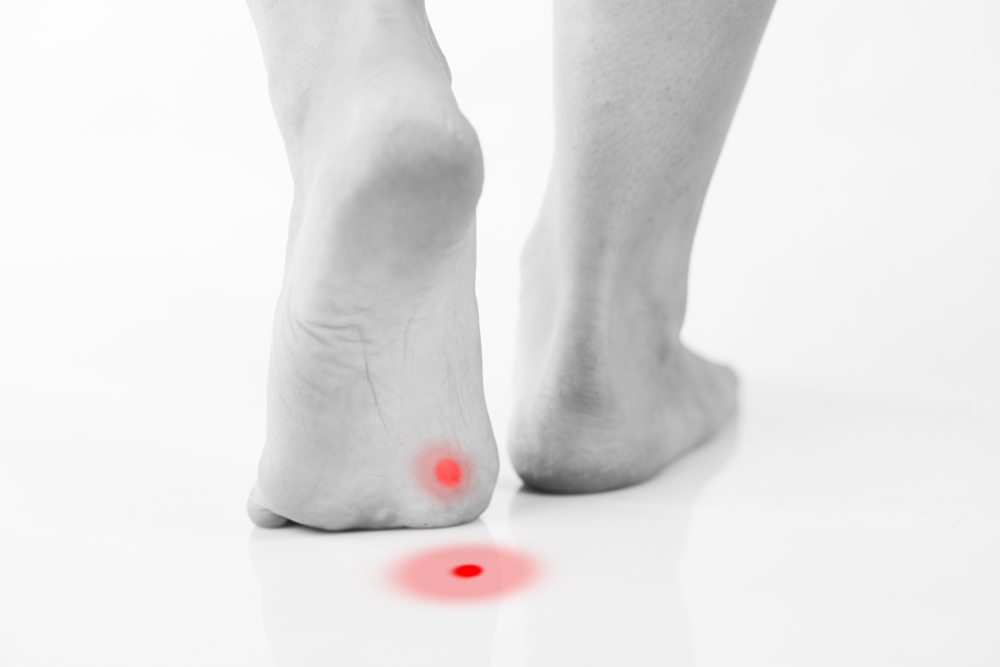
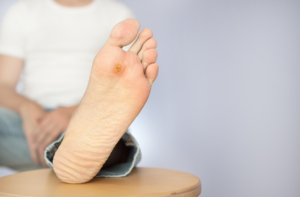 What is a plantar wart?
What is a plantar wart?
Warts are small, rough, thick and often painful lumps on the skin that are caused by a virus called the Human Papilloma Virus (HPV). When a wart is present on the bottom of your foot, it’s called a plantar wart.
What causes plantar warts?
Plantar warts are spread through direct contact – either with someone that has the virus, or from sharing floors, shoes and socks with someone who has the virus. This means warts can quickly spread through families if care is not taken. Once you have the virus, it will be in your system for life, even if you don’t have any warts currently showing. As the virus is highly contagious, it’s important to seek plantar wart treatment early.
While plantar warts can affect anyone of any age, they tend to be more common in children. This is thought to be because their immune system hasn’t reached full maturity. My FootDr offers a variety of plantar wart treatments that are suitable for all ages and pain tolerance levels.
Plantar wart symptoms
Plantar warts are not usually a serious health concern. They can, however, cause extreme pain and discomfort if they arise in high weight-bearing areas, like beneath your heel, the ball of your foot or your toes. This can make running, jumping and even walking uncomfortable, as the thick wart presses inwards on the sensitive nerves of the skin. The tenderness can make us change the way we walk to avoid the pain, and cause strain elsewhere in the body. A little wart can be a big problem. If pain persists, contact a My FootDr podiatrist to undergo plantar wart treatment.
Is it a wart or a corn?
Warts and corns can look very similar on first glance, leading many health professionals and those trying to treat the problem at home to make the wrong diagnosis. As warts and corns have completely different treatment requirements, we highly recommend saving yourself time and money treating the wrong problem, and having a Podiatrist diagnose the cause of your pain.
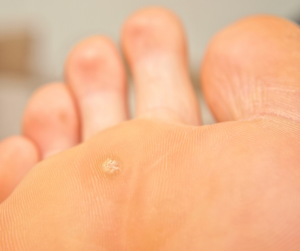 If you have a wart, the top layer of callus that often overlies the wart must be removed. Before this happens, you cannot confidently differentiate the two – this is where we see many people go wrong. If the mass beneath is a wart, you will notice:
If you have a wart, the top layer of callus that often overlies the wart must be removed. Before this happens, you cannot confidently differentiate the two – this is where we see many people go wrong. If the mass beneath is a wart, you will notice:
- A rougher, granular appearance in the wart tissue
- Pain when pinching the wart
- Little black dots (dried blood) in the wart tissue
- Bleeding when the top of the wart or overlying callus is removed
- The natural lines in your skin move around the wart, and not through it
Treating plantar warts
Warning: We strongly advise against using home-care wart pads or creams from the chemist. These solutions almost always contain acid or other keratolytic ingredients to ‘eat away’ and dissolve the wart tissue. We often see patients who have used this unsuccessfully and have had the acid affect the healthy, thin surrounding skin. This causes an extremely painful injury, often producing much more pain than the wart itself, and leaves your fragile skin vulnerable to infection while it repairs.
At My FootDr, we offer plantar wart treatments to suit all ages and pain tolerance levels. This includes:
- Using a mild acid in a safe and controlled environment, applied by an experienced Podiatrist. This usually requires multiple applications over several weeks and removes the viral cells slowly, allowing healthy skin cells to replace them.
- Cryotherapy to freeze warts using liquid nitrogen. We often use this treatment together with other treatments to maximise the effects.
Surgical plantar wart removal is usually not recommended to treat plantar warts because it can cause painful scarring.
Plantar warts can resolve on their own, though the timing is highly unpredictable with some warts taking weeks and other being present for years. If your wart is causing you pain, discomfort, or is affecting the way you walk, we highly recommend having it treated.
Preventing plantar warts
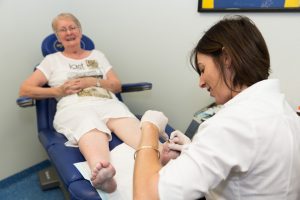 The following tips may help to prevent plantar warts:
The following tips may help to prevent plantar warts:
- Avoid walking barefoot in public changing rooms and showers
- Change your shoes and socks daily
- Keep your feet clean and dry
- Check your children’s feet periodically, and treat any warts before they spread to other members of the family
- Avoid direct contact with warts on other persons or on other parts of the body
- Do not ignore growths on, or changes in, your skin
- Visit a podiatrist immediately if you notice any lumps or sores on the foot
Plantar Wart FAQs
How do you get rid of plantar warts?
Consult your My FootDr podiatrist for any plantar wart removal. We often recommend using mild acid delivered by an experienced podiatrist, or cryotherapy to freeze the wart off using liquid nitrogen.
Are plantar warts contagious?
Yes, they are. They’re spread through direct and in-direct contact with a person who has Human Papilloma Virus (HPV). It is important to seek treatment as soon as you detect a plantar wart.
Can I walk after plantar wart removal?
If surgically removing a plantar wart, it is suggested that you don’t put any pressure on your foot for 1-2days and keep the area bandages.
How deep can a plantar wart grow?
Plantar warts grow deep within the skin before showing symptoms like thickened skin, pain and tiny black dots. You can discover how deep your plantar wart is by undergoing treatment with your podiatrist.
How do you stop plantar warts from coming back?
There is no guaranteed cure for plantar warts that will completely stop them from returning, as the Human Papilloma Virus (HPV) that causes the warts live in your body forever. However, you can prevent the spread by not scratching these warts or touching other parts of your body with them. If plantar warts return, continue with your treatment, or consult your doctor to explore another treatment option.
What happens to a plantar wart if left untreated?
If left untreated, a plantar wart can continue to grow and spread to various parts of your body and infect others that come in contact with you. Besides it being important to manage the spread of the virus, it’s also important for your personal health to treat your plantar wart as soon as possible. Plantar warts can become painful if untreated and effect the way you stand, walk and run. In some cases, this may cause muscle or joint discomfort.
Can plantar warts be surgically removed?
Yes, plantar warts can be surgically removed. However, this method of removal is often not recommended as surgery can cause painful scarring.
Are plantar warts contagious after treatment?
Plantar warts can still be contagious in-between treatments, and so it is important to keep them covered as to not infect anyone through direct and indirect content. Once the plantar wart has completely disappeared, the skin in the area will not be contagious. However, it is still important to keep an eye out for the early signs of developing warts around your body, in case another area has been infected.
How long for plantar warts to heal after acid treatment?
After receiving your first acid treatment from your podiatrist, it may take several sessions before your plantar wart is fully removed.



